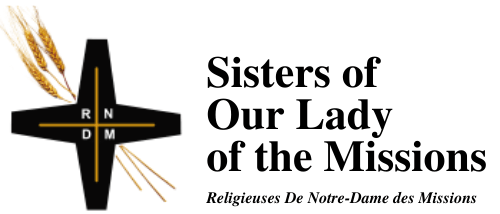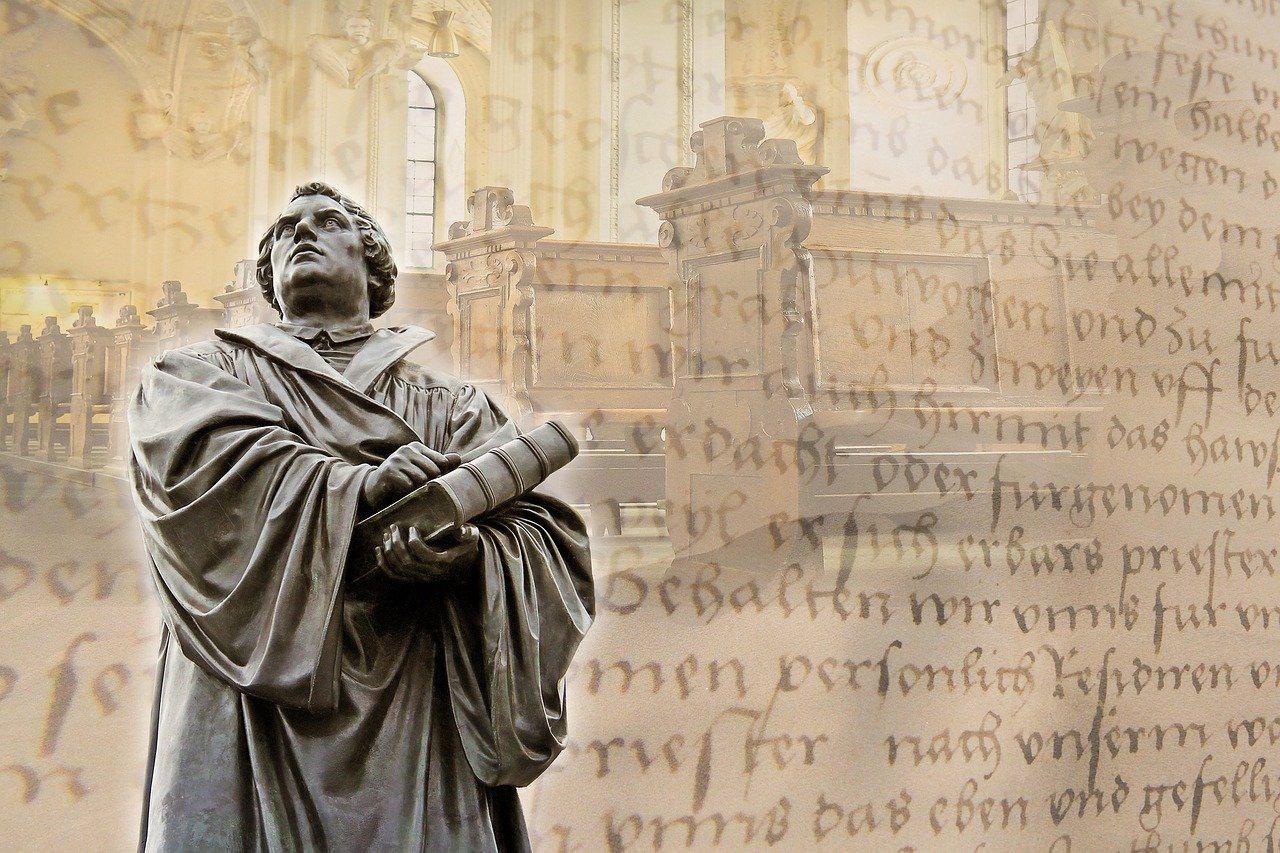Reflection for the Thirty-First Sunday in Ordinary Time B / Twenty-Fourth Sunday
after Pentecost
Readings:
Deuteronomy 6: 2-6 (RM) or 1-9 (RCL); Psalm 18 (RM) or 119 (RCL); Hebrews 7: 23-28 (RM) or Hebrews 9: 11-14 (RCL); Mark 12: 28-34.
ELCA/ELCIC if celebrating All Saints Sunday: Isaiah 25: 6-9; Psalm 24; Revelation 21:1-6; John 11: 32-44.
When I was teaching a course on the liturgical year, I enjoyed telling why Martin Luther, they say, posted his 95 Theses on the front door of the Castle Church in Wittenberg, Germany, on October 31st. He was not celebrating Hallowe’en with some frightfully radical theological propositions. He was posting them on the 31st because everybody in town was coming to church for All Saints’ Day, and the word would get out quickly to the scholars he hoped to debate. This was about well-timed, widespread communication. It was social media, 1517 style.
Students would look up and their faces would say, “Oh yeah, that makes sense.”
I also rather enjoyed pointing out that the Roman Catholic Church caught up with Luther’s church reform movement precisely 450 years later. In 1967, Lutherans around the world were celebrating the 450th anniversary of the Reformation, while Catholics around the world were scratching their heads trying to figure out how to implement a renewed Eucharistic liturgy after Vatican II. It included a much richer range of scripture readings, which made possible scripture-based preaching, all in the people’s own language for easy comprehension. Imagine that.
There’s a reason why this Reflection is starting out talking about Catholics and Lutherans, and not only because it’s the right time of year. It has to do with church reform issues today, in particular, the access of women to all church ministries. We’ll start from the second of our Sunday readings the past few weeks and into November, a semi-continuous reading from the Letter to the Hebrews.
Hebrews is an odd duck among New Testament literature: not written by Paul, not a letter, and nobody knows who these “Hebrews” were. The weight of its argument has to do with an idea that Christ is the great high priest offering one sacrifice, once and for all, to take away sins. This is flat-out propitiatory sacrifice – a sacrifice to mollify the righteous anger of God against sinners. And while Christ is identified as “a priest in the order of Melchizedek,” which calls up a proto-Eucharistic image of an offering of bread and wine instead of animals, the concept of a sacrificing priesthood remains untouched.
Anthropologists have uncovered a clear link between sacrifice and patriarchy, such that the act of ritual sacrifice, across a span of different religious expressions, historical periods and diverse cultures, acts to solidify male bonding and exclude women. Nancy Jay described ritual sacrifice as “birth done better,” and “a remedy for having been born of woman.”* So if you follow this trail of logic, you’ll perceive why the Christian traditions that have maintained a sacrifice-theology in their understanding of the Eucharist – Roman Catholic, Orthodox, and to some extent Anglican—would be likely to exclude women from the priesthood, or even from proximity to the altar of sacrifice.
I’ve studied this question for decades. I’ve published several research articles on the link between sacrifice/Eucharist and the idea that women’s bodies somehow pollute the sanctuary. So I was absolutely gobsmacked when a woman whom I’ve known since childhood told me that in the 1960’s, when we were teenagers, she approached the pastor of her Lutheran church and asked if she could be an acolyte. The pastor replied No, because female bodies were impure. He said that when she lit the candles before the service and extinguished them afterward, she would lean too close to the altar. Now, Lutherans have no theology of sacrifice linked to the sacrament of Holy Communion. None at all.
Sooo, how to even begin to look deeper into the origin of this pernicious and yet persistent concept that women’s bodies somehow defile the Holy? Is this the deep reason for lingering visceral repugnance at the idea of women serving at the altar as ordained clergy? And how much more church reform work needs to be done?
If you visit Wittenberg today you can’t nail anything to those doors – they’re made of brass. But in 2021, the Maria 2.0 church reform movement in Germany made a clever use of this precedent to post seven theses for much-needed reform in the 21st century, in Catholic churches around the country.
If you had the chance – what would you post?
© Susan K. Roll
*Nancy Jay, Throughout Your Generations Forever. Sacrifice, Religion and Paternity, (Chicago and London: The University of Chicago Press, 1992.)
Susan Roll retired from the Faculty of Theology at Saint Paul University, Ottawa, in 2018, where she served as Director of the Sophia Research Centre. Her research and publications are centred in the fields of liturgy, sacraments, and feminist theology. She holds a Ph.D. from the Catholic University of Leuven (Louvain), Belgium, and has been involved with international academic societies in liturgy and theology, as well as university chaplaincy, Indigenous ministry and church reform projects.





Thank you for situating “this pernicious and yet persistent concept that women’s bodies somehow defile the Holy” into a scriptural, anthropological, and historical perspective. I was struck to learn that this prejudicial perspective also goes beyond the link between sacrifice/Eucharist.
Maybe Jesus took flesh of a woman over 2000 years ago, to put an end to this horrible idea?
If Jesus rose from the dead and made his first post-resurrection appearance to women, would that change our patriarchal mindset?
What if we really believed what Scripture says?